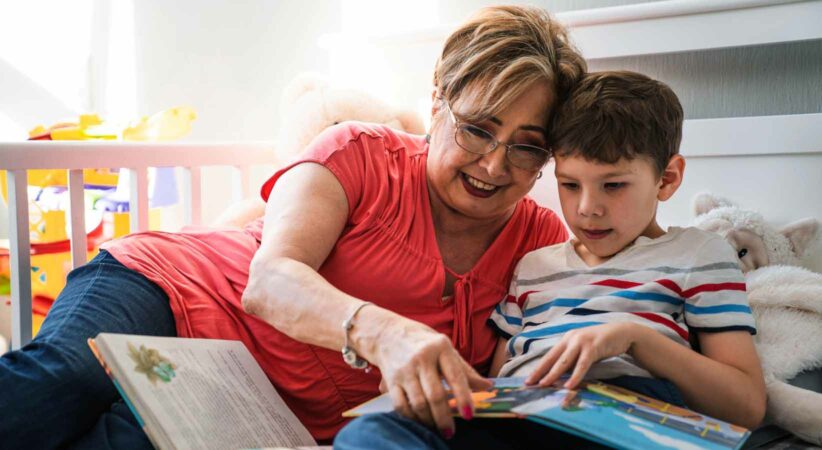
Tell Me a Story: Children Reading to Adults
It is well recognized that reading to children is very important for developing a love for reading and establishing foundational literacy skills. However, often this shared reading experience goes only one way: adults reading to children. But it is also important for children to read to their adults. Also, this shared reading practice at home tends to end once children learn to read. However, practicing reading in a safe and non-judgmental environment is important for burgeoning readers.
“Children who are learning to read need to practice. If your child is doing well, regular reading at home is a chance for them to show off their skills. If your child is having trouble, it provides a safe place to practice with someone they trust.” – Canadian Paediatric Society
Before children can read, have them tell you a story. They could recount an event that happened to them or make up a story. It’s a great way to introduce kids to literacy. Even better, write down their tale as they’re speaking. Then read it back to them. Point to the words as you’re reading them. Or, if they can read, point to the words as they read them. Not only does this practice help them increase their literacy, it also helps them practice the speaking and performance aspects of reading aloud.
“Children [are] sometimes terrified of reading aloud in the classroom, and this fear could potentially be alleviated through greater opportunities to practice at home.” –
Reading Rockets offers some great tips for parents:
- When you read with your children, show them that reading aloud should sound like talking.
- If your children are decoding the words in a sentence slowly, word by word, have them reread the sentence to make the reading sound like talking. This gives them practice in reading the new words and helps them understand the meaning of the sentence.
- If your children make a mistake in reading a word, stop their reading and point out the word they missed. You may want to help them read the word correctly. When they come to the end of the sentence, have them reread it to make the reading sound like talking. If they make many mistakes, the book they are reading may be too difficult. Try another book.
- As you listen to your children read, give them praise and encouragement.
- Post on the refrigerator or home bulletin board a list of the books and stories your children have read.
- When your children have finished reading a book, have them read it to another family member or friend.
- Make audio or video recordings of your children reading and send them to their grandparents or other family members.
When children reach school-age and start bringing books from school home, ask them to read to you. If they make mistakes or have a lot of starts and stops, have them read it again. Or, read it to them and then have them read it again. As Timothy Shanahan explains, “Studies show that this kind of repeated oral reading makes students better readers, even when it is done at home.”
Story time at home is a wonderful bonding experience as well as a valuable learning opportunity. It doesn’t have to end as children grow up and start reading independently. Continue this ritual and have them practice reading to you to help develop a lifelong love for reading.
Resources
- 11 Ways Parents Can Help Their Children Read
- The Effect of Family Literacy Interventions On Children’s Acquisition of Reading: From Kindergarten to Grade 3
- Finding Time to Read Together
- Fun and Effective Ways to Read With Children
- Let’s Read Together! Backgrounder
- Reading with Your Child
- Tips For Supporting Reading Skills at Home
Related Blog Posts
Chapter Books to Read Aloud
Want to add chapter books to family read alouds? They usually contain more complex stories than picture books and can be introduced before children are able to read independently. They’re …
Playful Learning with Interlocking Blocks
Interlocking blocks are versatile and fun to use.
Screen-Free Scavenger Hunts
Due to COVID-19, Screen-Free Week 2020 is now Screen-Free Saturdays! One day a week, every week, families are invited to turn off their devices and connect, explore and play while …
